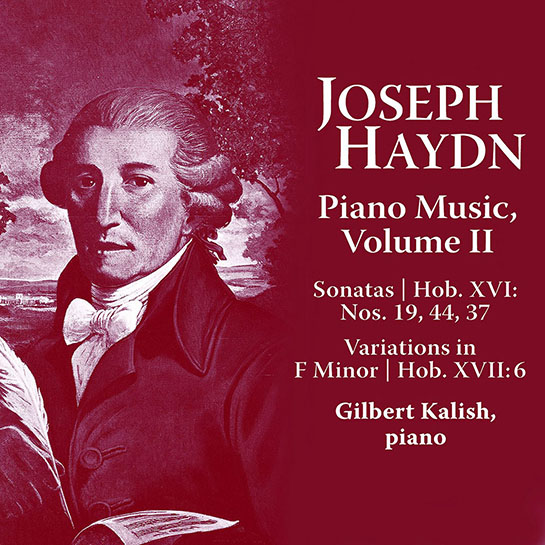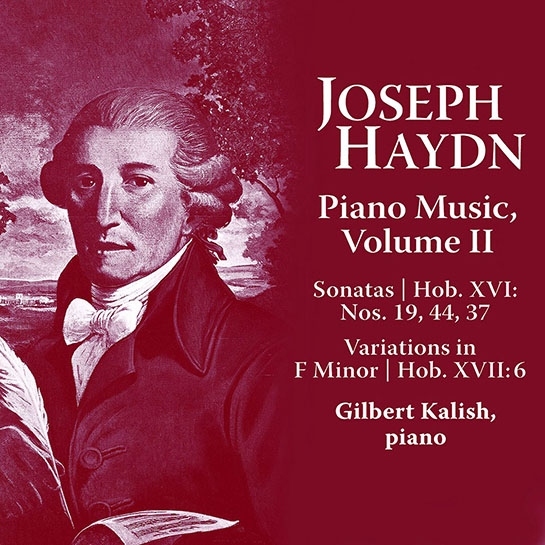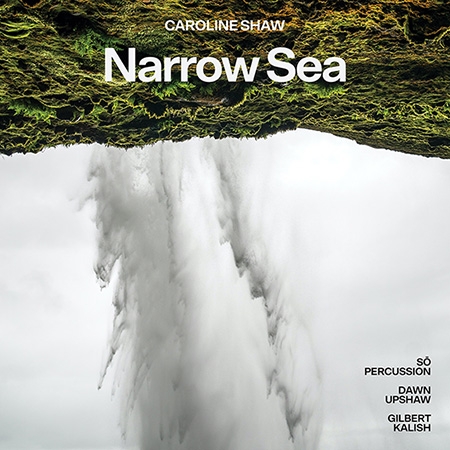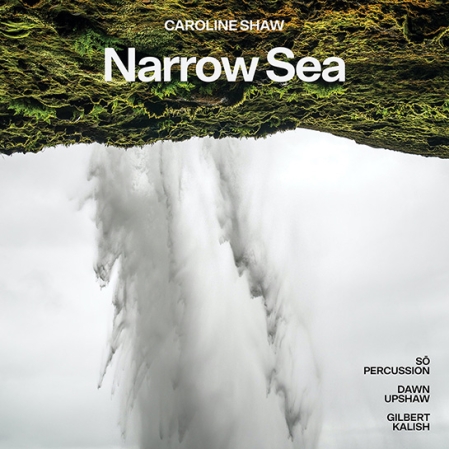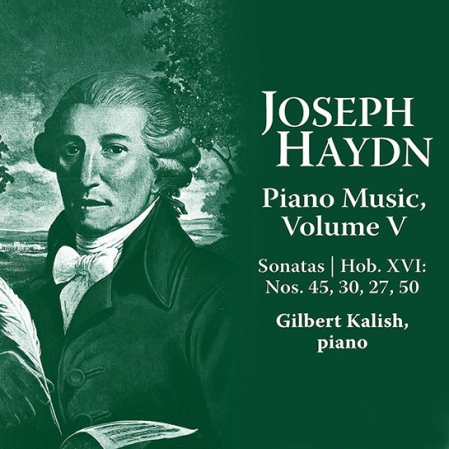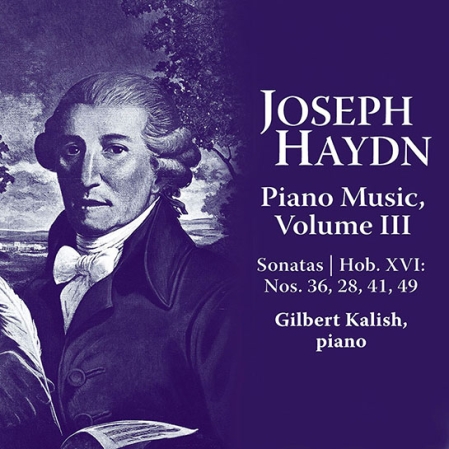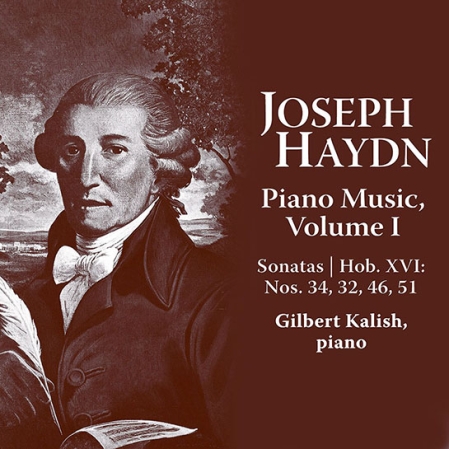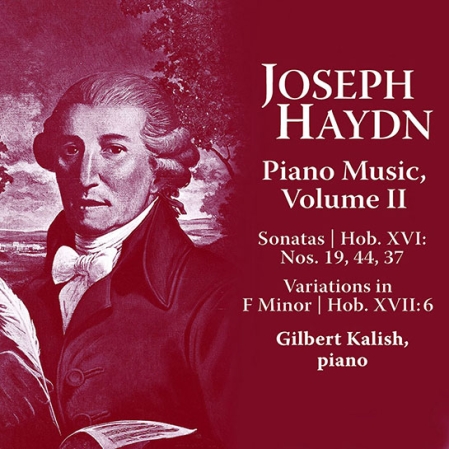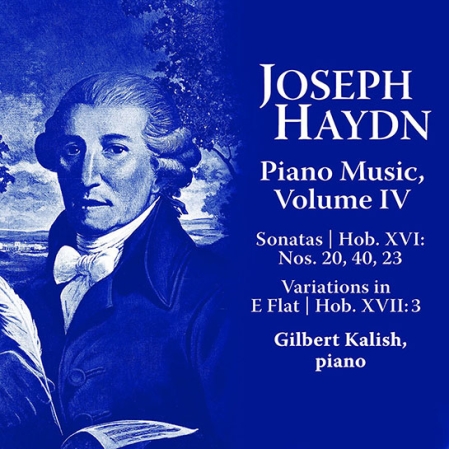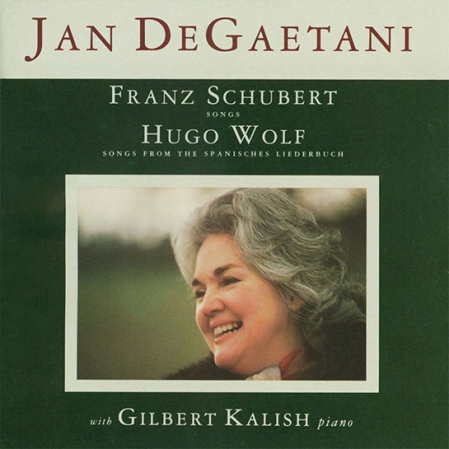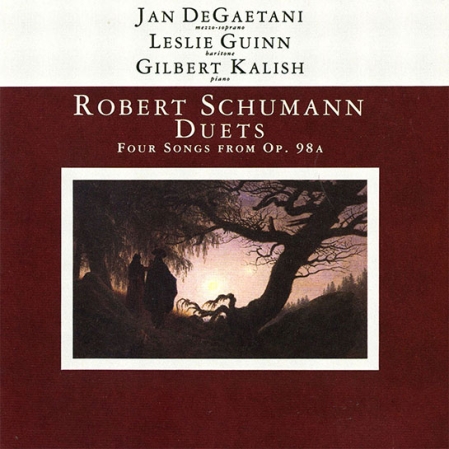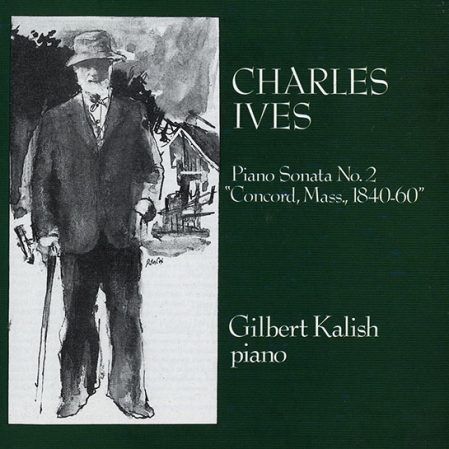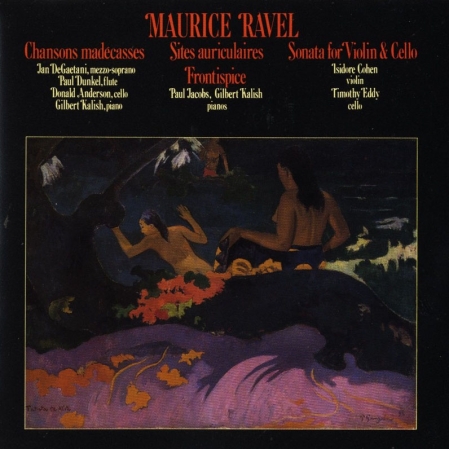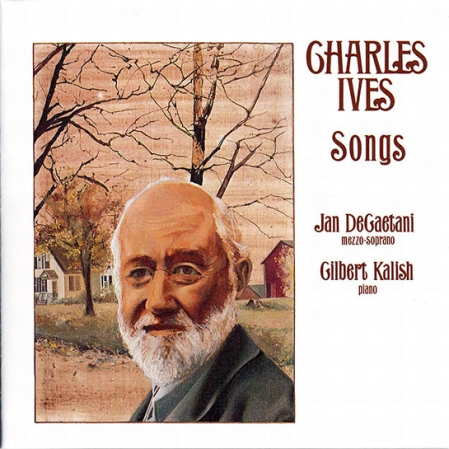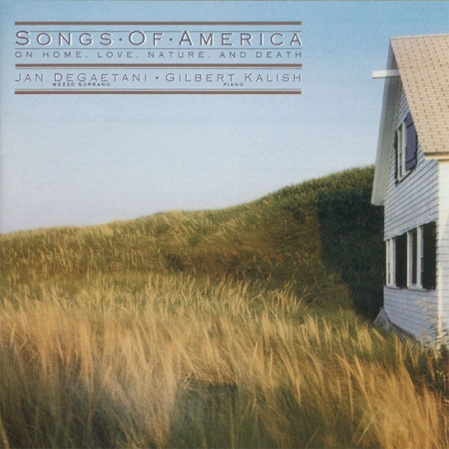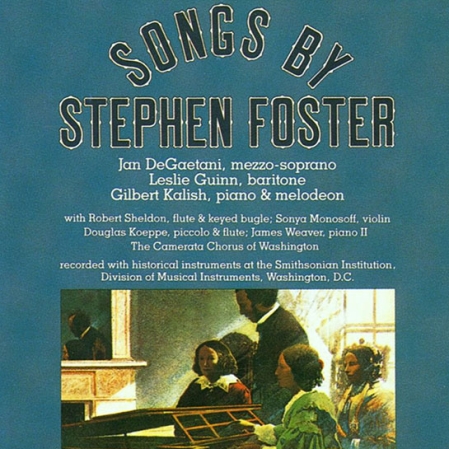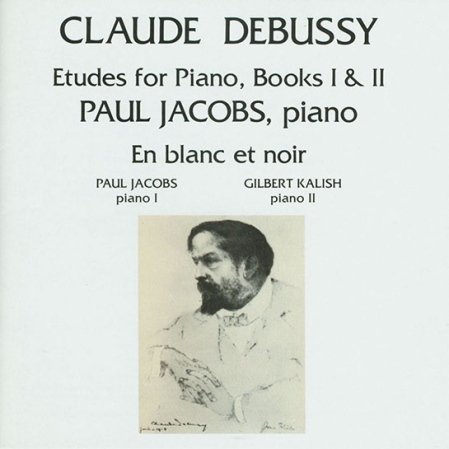Between 1975 and 1980, Nonesuch released a series of five LPs of pianist Gilbert Kalish performing the rarely recorded Haydn piano sonatas. Now, on the 200th anniversary of the composer's death, the recordings are being reissued, this time as digital albums. Volume II includes the sonatas Hob. XVI: Nos. 19, 44, and 37, as well as Variations in F Minor, Hob. XVII:6.
Between 1975 and 1980, Nonesuch Records released a series of five LP recordings of pianist Gilbert Kalish performing piano works—the rarely recorded sonatas and variations—by Joseph Haydn (1732–1809). Now, on the 200th anniversary of the composer's death, the recordings are being issued again for the first time since 1980, this time around as digital albums. Volume II includes the sonatas Hob. XVI: Nos. 19, 44, and 37, as well as Variations in F Minor, Hob. XVII:6.
Here, the pianist reveals the story behind and discusses the reaction to the initial recordings:
By 1975, it had become a delightful and well-established tradition for Tracey Sterne, who was then head of Nonesuch Records, to celebrate the conclusion of a recording project by opening a bottle of good cognac and sharing it with the artists and producers in a spirit of relaxed satisfaction. At the time, I had just finished a particularly difficult recording session, at the end of which my collaborator (who shall remain nameless) stormed out without a word to anyone.
Even amidst the turmoil, dear Tracey continued her lovely post-recording tradition, and while we were all at our ease and in a mellow frame of mind, she said the following to me, "Gil, you really deserve a solo recording after what you've been through this week. What would you choose to do if we gave you that opportunity?"
I answered immediately: the Haydn Sonatas. At that time, these were undervalued, mostly unknown works that deserved a hearing (as is the case even today, nearly 35 years later), and there were few if any recordings of any of them. Tracey jumped at the idea, and that conversation led to the recording of a single LP. It was not meant to be a series of recordings, but the reaction to the music was so strong and positive that the project developed a life of its own, and we did five full-length LPs of the Haydn. Only one of these LPs was transferred to CD at the time, and so this digital release, on the 200th anniversary of the composer's death, makes the entire set available once again for the first time in more than three decades.
—Gilbert Kalish, 2009
Below is the liner note from the original album release in 1976:
During the year 1766, two significant events occurred at the court of Prince Nicolaus Esterházy that affected Joseph Haydn, the prince’s assistant Kapellmeister. The first was the death of Gregor Werner, the elderly Kapellmeister, to whose post Haydn was immediately appointed. Second, Prince Nicolaus moved the entire court from Eisenstadt, in eastern Austria, to his elaborate “summer” palace of Esterház, where Haydn was to live secluded in the Hungarian marshes for nearly nine months of every year that he remained in service to the prince.
The greater separation from Viennese musical influences could have been detrimental to Haydn, but instead, the responsibility of his prestigious position and the praise he won from Prince Nicolaus seem to have served as an inspiration. Later in his life Haydn himself explained this to this friend and biographer Georg Griesinger:
My prince was always satisfied with my works. Not only did I have the encouragement of constant approval, but as conductor of an orchestra I could make experiments, observe what produced an effect and what weakened it, and was thus in apposition to improve, alter, make additions or omissions, and be as bold as I pleased. I was cut off from the world—there was no one to confuse or torment me, and I was forced to become original.
In Haydn’s solo keyboard sonatas a change in style can be discerned beginning in about 1767, giving evidence of Haydn’s constant experimental creativity after the move to Esterház. On the whole, Haydn’s pre-1767 sonatas are small works that were usually referred to by the composer himself as divertimentos. Many relate to the suite by incorporating dance movements. Other show Italianate traits or the influence of Haydn’s Viennese predecessor Georg Wagenseil, while still others include distinct pre-Romantic elements from the empfindsam style of Carl Philipp Emanuel Bach, whose keyboard works Haydn had studied in detail. Few, however, are as broad in scope or as innovative as those written after 1766.
The Sonata in D, Hob. XVI:19 (Landon 30), is the earliest of these works and the only one by Haydn dated 1767. In it, compositional elements of the early sonatas still appear but are used with new breadth and greater clarity. Though Haydn listed this work as a “Divertimento per il Cembalo” in his own catalogue, it is a fine example of an early Classic sonata with the conventional fast-slow-fast succession of movements.
The moderate tempo of the first movement lends itself well to the varied phrase lengths of the opening theme, which with its dotted rhythm, extensive embellishments, and rolling triplet figures exudes the spirit of C.P.E. Bach. The clearly articulated secondary theme in A employs another Bach effect in its use of repeated notes and left-hand octaves. In the development section this same material is effectively reworked in different harmonic contexts and with new rhythmic vigor before a clever relocation of transitional material leads to the shortened recapitulation.
In the Andante in A, Haydn’s predilection for ensemble and orchestral composing comes to the fore. Unlike Mozart, Haydn was not a virtuoso pianist—his real instrument was the entire orchestra—and his keyboard works frequently incorporate orchestral textures. One such instance is the unison ending of the opening theme. Moreover, as Haydn moves toward the dominant and the secondary section of the exposition, the melody shifts into the baritone range and a rich cantabile theme sings out, almost as if intended for cello. The dualistic conception of the movement becomes explicit at the close of the exposition, where a dialogue occurs between a fragment of the opening theme in the upper register and the cadential motif of the secondary theme in the lower. As if to accentuate this dualism even further, the short development section is devoted entirely to a presentation of the main theme in the soprano range, with the recapitulation beginning directly with the transitional baritone melody. A fermata before the closing bars permits insertion of the performer’s cadenza—a concert-like effect that points again to an orchestral conception.
In the exuberant finale, for the first time in his keyboard sonatas, Haydn makes use of ABACA rondo structure. At each return of the D-major refrain, however, the theme is varied, a procedure Haydn was to use frequently and with absolute mastery. The movement is neatly balanced in that both the refrain and the two contrasting couplets consist of two repeated parts. For tension, and as a foil to the refrain, the first couplet is in D minor; the second, characterized by bass tremolos, is in the dominant. Haydn’s coda is a further variation of the refrain, here featuring octaves and 16th-notes for a whirlwind close.
Haydn’s Sonata in G minor, Hob. XVI:44 (Landon 32), was the third sonata completed after 1766; it is now dated between 1768 and 1770. The new chronology proposed by Christa Landon places it immediately before the composer’s better-known C-minor sonata, Hob. XVI:20 (Landon 33), of 1771, a work that also exemplifies Haydn’s Sturm und Drang style. The G-minor sonata is thus an early work from the period when Haydn and much of Europe were exploring alternatives to the lightness and frequent superficiality of galant and rococo music. The use of minor keys, dramatic rhythms, unexpected harmonies, complex counterpoint, and expressive dynamics were among the characteristics that epitomized this early attempt at a more subjective, Romantic approach to composition.
While the outer dimensions of this sonata are not large, the ranger of expression of its two movements is wide. The first movement, marked moderato, displays not merely depth of emotion but a sense of the dramatic through the extreme contrast of the expository material. The first theme is a symmetrically phrased melody featuring continuous rhythmic and harmonic shifts; the secondary theme consists of rapid arpeggios in the major mode; and the closing theme, also in major, returns to a cantabile melody, derived from the first theme, that had first appeared in minor at the beginning of the transition section. Haydn’s penchant for the unexpected manifests itself twice in this movement. After a pause in the development section that might seem to herald the recapitulation, Haydn interjects a tightly knot imitative rendition of the primary theme. Then, in the recapitulation, he adds a cadenza-like adagio passage between the two statements of the closing theme.
The final movement, an Allegretto, is cast in an unusual sectional form that presents first a rounded binary theme in G minor, then a contrasting theme in G major, and finally a varied restatement of each of the two sections. The second section, though commencing with the same rhythmic motif as the first, provides a contrast through its more varied and kinetic overall rhythmic structure and its use of a lower tessitura. The return of the G-minor section is extended contrapuntally, while the G-major portion is abbreviated; Haydn then concludes the work in the major mode with a brief coda consisting primarily of 16th-note arpeggios.
The D-major sonata, Hob. XVI:37 (Landon 50), perhaps Haydn’s best-known keyboard sonata, evidently stems from about 1778–79—the period in Haydn’s life when he began dealing with the Viennese music publisher Artaria. Detailed correspondence between the composer and Artaria informs us that the work had been completed and sent to the firm before January 31, 1780, for inclusion in a set of six of his piano sonatas. This first publication by Artaria of Haydn’s music appeared in April 1780, dedicated to two acclaimed Viennese pianists, Katerina and Marianna von Auenbrugger. Haydn’s interest in this first edition and in the pianists’ acceptance of his works is indicated in a letter to Artaria dated February 25, 1780, when he returned the correct proofs. “The approval of the Demoiselles von Auenbrugger is most important to me, for their way of playing and genuine insight into music equal those of the greatest masters.” Publication of these sonatas was eventually widespread, and contemporary criticism in Germany was laudatory. However, a French critic in the Almanach musical of 1781, while acknowledging the “new traits and bold turns” of these sonatas, claimed that they contained “errors and harshness of style that do not come up to the reputation of this composer.”
As a set, the first six sonatas published by Artaria have always had great appeal: they combine an accessible melodic style with the larger dimensions and rhythmic complexity of works intended for virtuoso performance. In the opening Allegro con brio of the D-major sonata, the thematic style—patently derived from opera buffa—and the Alberti bass figures represent a distinct departure from the style of those works written under C.P.E. Bach’s influence. The relatively brief development section opens with the main theme in the bass but is thereafter generally episodic, consisting of virtuosic figural passages in 16th notes. The recapitulation, atypically for Haydn, is a nearly verbatim restatement of the exposition.
The Largo in G minor brings a sudden shift in mood and texture by means of an introspective sarabande-like movement. The somber harmonies, evocative of the Sturm und Drang period, disappear when the movement moves directly into the rondo finale (marked Presto ma non troppo). As in the finale of the earlier D-major sonata, both the refrain and the two contrasting sections (in D minor and G, respectively) are in two repeated parts. At the end of the second contrasting section Haydn adds a diminutive retransition to the final, extended statement of the refrain.
Ten years after the publication of the six Auenbrugger sonatas of 1780, Haydn’s ties with the Esterházy family began to weaken, for in 1790 Prince Nicolaus died and his successor moved the court back to Eisenstadt. By the end of that year Haydn had received permission to embark on his first journey to London, and during his second sojourn there in 1794–95 he completed his final three piano sonatas. In 1793, while spending a year in Austria between these trips, Haydn composed his Variations in F minor, Hob. XVII:6. Haydn entitled the work “Sonata” in the autograph, but on a copyist’s manuscript he himself provided a different title and dedication: “Un piccolo divertimento scritto e composto per la Stimatissima Signora de Ployer di me Giuseppe Haydn 793.” When the work was published by Artaria six years later it bore the title “Andanté avec Variations pour le piano forte,” a more fitting description of the structure of the work. The print states that the variations were composed and dedicated to a Viennese baroness, Josefine von Braun, but Barbara von Ployer (a gifted Viennese pianist for whom Mozart wrote two concertos) was no doubt the original recipient of the work.
The power of these variations lies in Haydn’s handling of variation technique. The Andante displays this aspect of Haydn’s style with not one but two different themes, each of which undergoes two variations after its initial statement. A final unvaried statement of the first theme, followed by an extensive coda, concludes the composition and creates the following form: I II I1 II1 I2 II2 I Coda. The first theme, initiated by thirds in the bass, has a curiously pensive character. The second theme also begins in the bass, but provides contrast through its lighter character, use of the major mode, and more florid accompaniment. In the variations Haydn generally remains fairly close to the theme, particularly with theme II. Thus, the initial variation of the first theme dissolves it into staccato 16th notes, while that of the second theme merely adds trills and other embellishments. Thirty-second-note figuration pervades the second version of the first theme, accelerating to 32nd-note triplets and 64th-note ornaments in II2. The restatement of I (without repeats) then leads to a lengthy coda in which dotted-note rhythms, virtuosic scale and arpeggio passages, massive chords, unexpected pauses, and rapid dynamic shifts bring the variations to a dramatic close.
—Jean K. Wolf, 1976
PRODUCTION CREDITS
Engineering and Musical Supervision: Marc J. Aubort and Joanna Nickrenz, Elite Recordings Inc.
Original album mastered by Robert C. Ludwig, Masterdisk Corp.
Coordinator: Teresa Sterne
Album originally released as H-71328 in 1976
519788
MUSICIANS
Gilbert Kalish, piano
